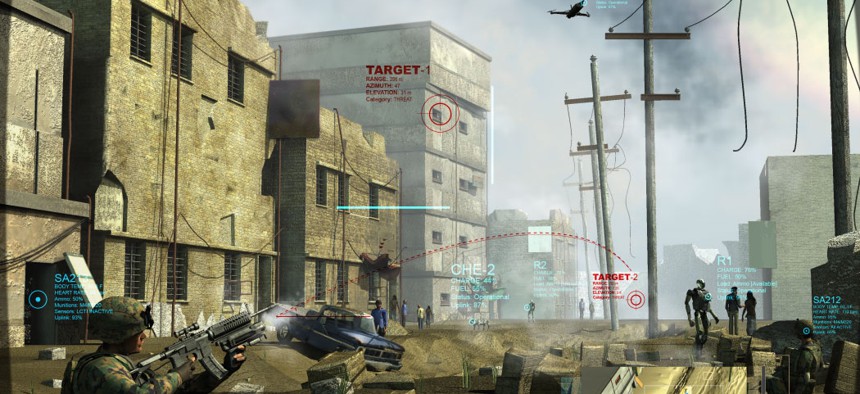DARPA goes to next phase of Squad X
The research agency awards Lockheed a contract to continue work on bringing a command-and-control view to the squad level.
Pentagon researchers are taking a project to bring a real-time operational picture to squads in the field into the next phase.
The Defense Advanced Research Projects Agency has awarded Lockheed Martin a $10.6 million contract to start work on Phase II of the Squad X Core Technologies program, which is intended to deliver the kind of situational awareness available to command posts to smaller deployed units.
Lockheed was one of nine companies given Phase 1 contracts late last year to begin work on the program. “Our goal is to develop technologies that support a three-dimensional common operating picture leveraging input from integrated mobile sensors, as well as the ability to organically locate and identify friendly forces and threat locations in near real time,” Maj. Christopher Orlowski, DARPA program manager, said at the time.
The Squad X program got started in July 2014 with a call for white papers, looking for novel technologies that could integrate mobile sensors to create a 3D picture that could identify both friendly and unfriendly forces. The program listed four core technologies to be addresses in Phase I:
Precision engagement of threats out to six-tenths of a mile, while maintaining compatibility with weapon systems and without imposing weight or operational burdens.
Non-kinetic engagement, with the ability to disrupt enemy command and control, communications and use of unmanned assets at a squad-level operational pace.
Squad sensing, or the ability to detect potential threats out to six-tenths of a mile at a squad-relevant operational pace.
Squad autonomy, which involves increasing squad members’ real-time knowledge of their own and teammates’ locations within less than 20 feet in GPS-denied environments through collaboration with embedded unmanned air and ground systems.
By exercising the Phase II option for Lockheed, DARPA brings the total awarded to the company to $13.4million. Work under the new deal is expected to be completed in early 2018.
The ability to send a command-and-control view to smaller units—or even individual soldiers—in the field has been a goal of the military for a while. The Marine Corps, for example, has looked to make better use of mobile devices, while the Army, with its Warfighter Information Network-Tactical, has been working to take that situational awareness view from a command post to vehicles and eventually to deployed soldiers.




